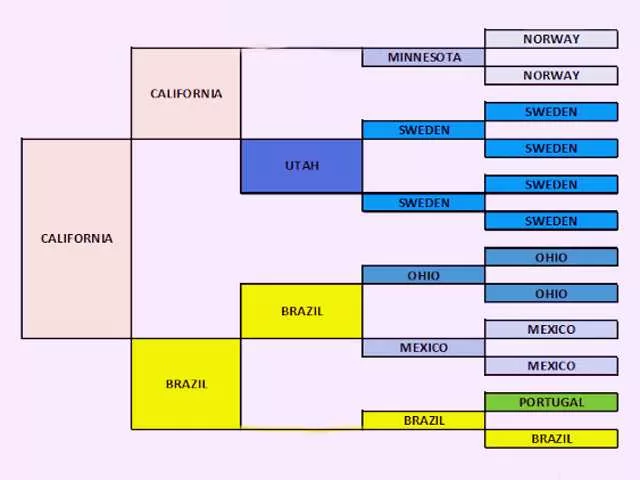For many, the journey into their family history begins with the familiar task of mapping out immediate connections in school projects. However, the conventional boxes and lines used in grade-school family trees are just the tip of the genealogical iceberg.
Exploring more advanced and creative family tree formats can unlock a richer understanding of your heritage. Let’s delve into some popular methods for illustrating your family’s unique narrative.
Table of contents
Pedigree Charts: Tracing Lineage with Numbers
Pedigree charts closely resemble the traditional family trees many of us created in school. This approach assigns each individual a number, illustrating direct ancestry. The person at the end of the family tree is labeled as number 1, with subsequent numbers representing parents and grandparents. The resulting chart takes on the appearance of a rocket ship lying on its side, offering a simplistic and traditional approach to family tree creation.
View more information and illustrations of pedigree charts here.
Creative Layouts: Beyond Boxes and Lines
Those eager to share their family history often opt for creative layouts such as photo montages, scrapbooks, and paintings. A photo montage, presented in video format, weaves family pictures and music together, providing a visual journey through generations. Scrapbooks, on the other hand, offer a tangible way to preserve family heirlooms and photographs, creating a cherished gift for future generations.
Learn more about scrapbooking your family tree here.
For a grand display visible to all, commissioning a professional painting may be the ideal choice. Talented artists, experienced in illustrating family histories, can capture the essence of your family’s past. Some opt for paintings depicting historical migrations, while others choose intricate trees with family members’ names woven into the branches.
Discover more about family tree paintings here.
Genograms: Beyond Names and Dates
In fields like psychiatry and medicine, the genogram steps beyond traditional family trees. This type of family tree not only illustrates names and dates but also showcases family relationships and medical histories. While less traditional in genealogy, genograms are gaining popularity as people recognize the importance of tracing hereditary medical conditions.
Explore more about genograms here.
Ahnentafel Charts: Compact Genealogical Recording
Ahnentafel charts offer a space-efficient method for recording family history. Comprising names and numbers, the layout ensures convenience for those documenting genealogies in notebooks. The numbering system follows a specific pattern, with the father’s number always twice that of the child, and the mother’s number two times the child’s number plus one.
Find more information on Ahnentafel charts here.
GEDCOM: Bridging Genealogical Software Gaps
As online family tree creation gains popularity, the multitude of family tree makers on the web presents challenges. GEDCOM, or Genealogy Data Communication, emerged as a solution. This standard file format allows for the seamless exchange of genealogical data between different software platforms, ensuring efficient collaboration among genealogists.
Learn more about the GEDCOM standard here.
The Modern Age: Endless Possibilities
Today’s family tree tools offer endless possibilities, from simple outlines of immediate families to in-depth collaborations spanning entire bloodlines. Whether through artistic depictions, innovative charts, or collaborative software, tracing your lineage has never been more accessible. Embrace the wealth of resources available and embark on the journey of creating your family’s illustrated history.
In this age of connectivity and technology, there’s no better time to unleash the potential of your roots and explore the intricate tapestry of your family’s past. The tools at your disposal are as diverse as the stories waiting to be uncovered, offering a gateway to a more profound understanding of your heritage.

